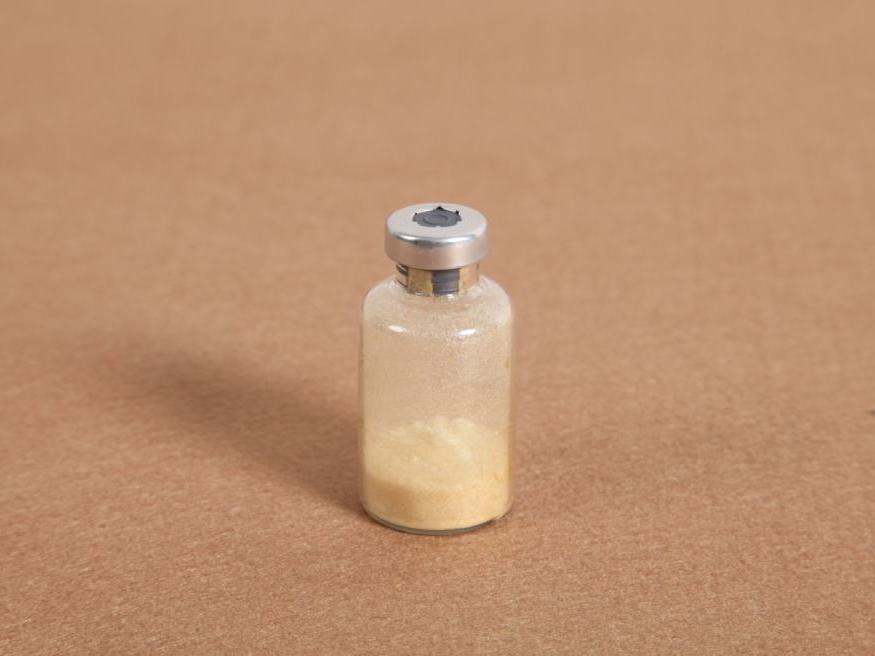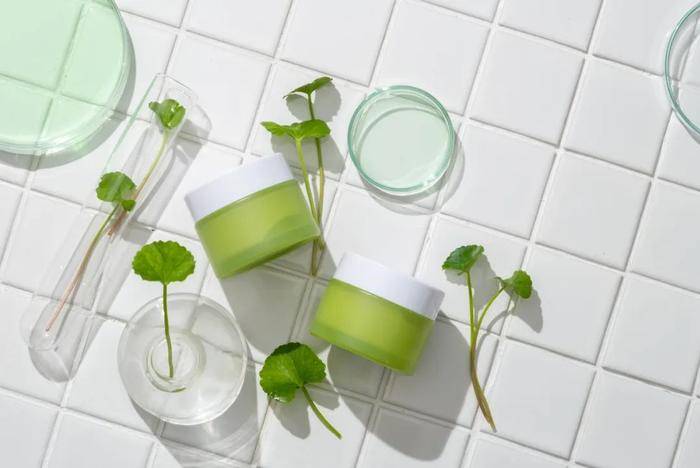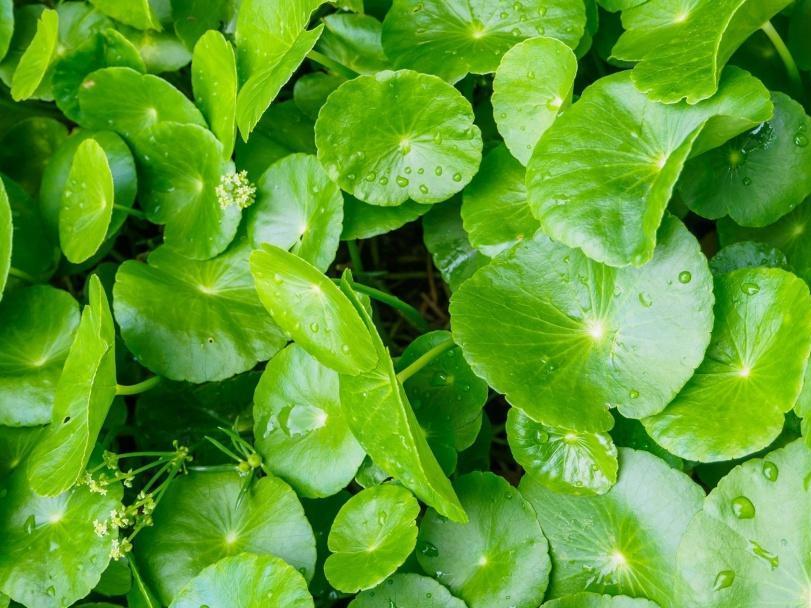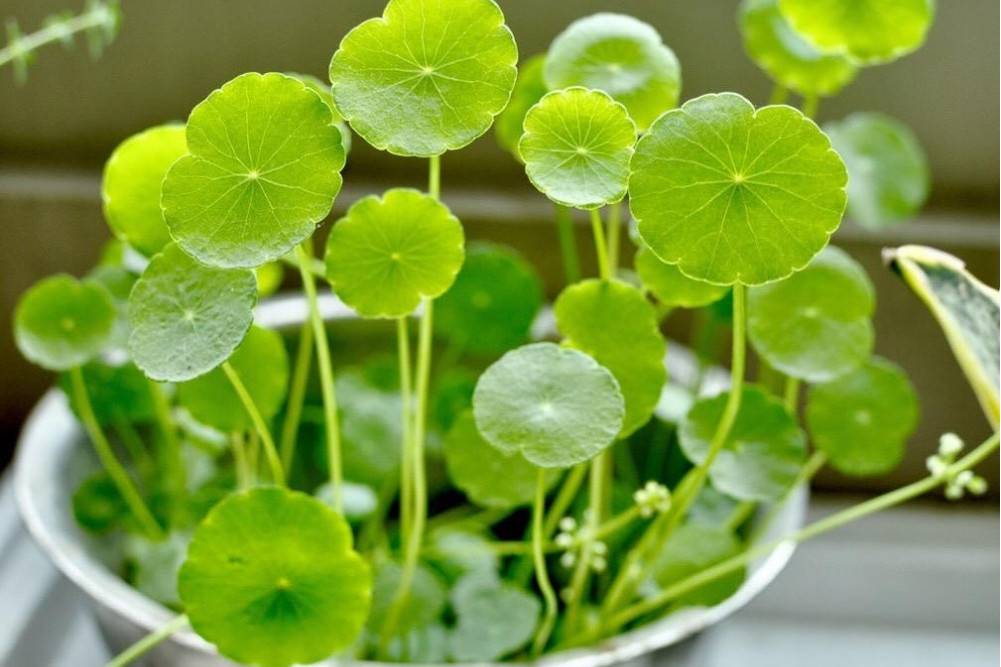Study on Centella Asiatica Extract in Cosmetics
Centella asiatica is a perennial herb in the Apiaceae family with a history of use in China, the Philippines, Sri Lanka, India and Africa that goes back thousands of years [1]. In China, it is widely used to treat various diseases and is also a traditional Chinese medicine that can be used in health food products, as announced by the National Health Commission. Triterpenoids are the main active ingredients of Centella asiatica and are also the most widely researched group of active substances. The triterpenoids in Centella asiatica are based on a pentacyclic triterpenoid skeleton, of which asiaticoside, madecassoside, asiatic acid and madecassic acid are the most abundant pentacyclic triterpenoids in Centella asiatica [2].
Modern pharmacological studies have shown that Centella asiatica has anti-inflammatory, antibacterial, antioxidant and collagen synthesis-promoting effects, and plays an important role in the treatment and prevention of various diseases [3-5]. In terms of skin, there are many documented reports of Centella asiatica's remarkable therapeutic effects in burns, atopic dermatitis, psoriasis and wound healing [6, 7]. Studies have shown that Centella asiatica extract promotes tissue regeneration, cell migration and wound healing processes by promoting fibroblast proliferation and collagen synthesis [5], and is widely used in the cosmetics industry.
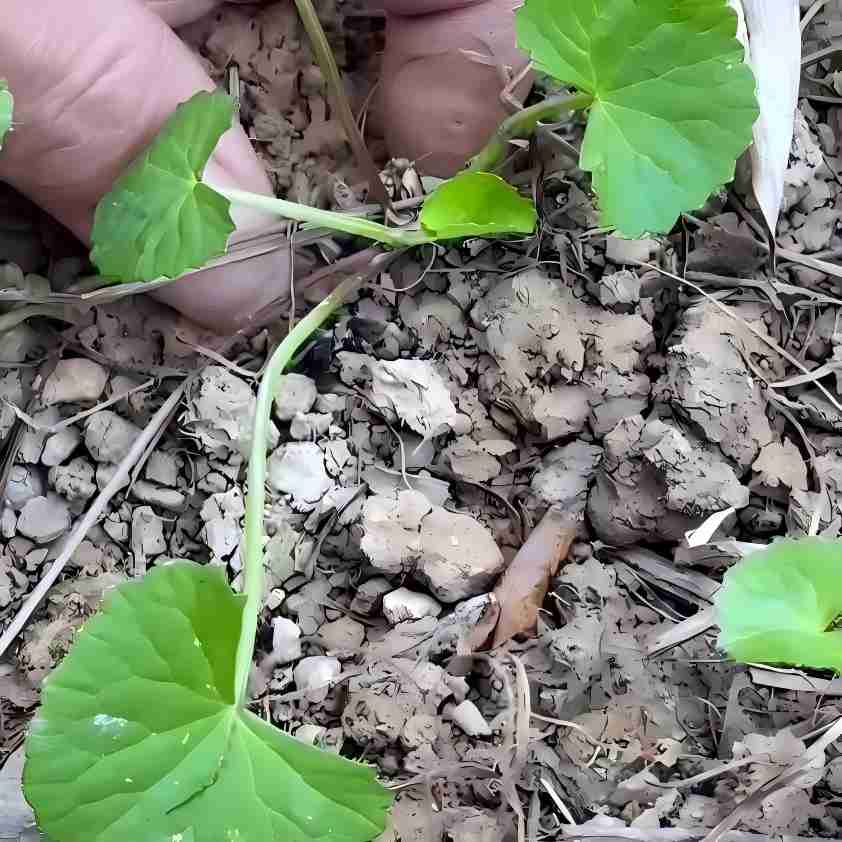
It is worth noting that the Expert Group for Safety of Cosmetic Ingredients has conducted a safety assessment on the use and added concentration of nine Centella asiatica-derived ingredients in cosmetics, including Centella asiatica extract, Centella asiatica callus culture and Centella asiatica flower, leaf and stem extract. According to the assessment results, the current use and added concentration of these ingredients in cosmetics is safe [8]. Therefore, the safety of Centella asiatica is guaranteed, in line with the concept of health, naturalness and safety, provided that its efficacy is excellent. In this paper, the main active ingredients of Centella asiatica and their applications in cosmetics are summarized by searching the CNKI database, Web of Science database and PubMed database. The problems in the application of Centella asiatica in cosmetics are analyzed and its development prospects are prospected.
01 The efficacy and application of Centella asiatica in cosmetics
In recent years, centella asiatica has been widely used in cosmetics and has become one of the most popular cosmetic ingredients among consumers.
This article, in accordance with the “Regulations on the Evaluation of Cosmetic Efficacy Claims”, searched the database on the official website of the State Food and Drug Administration and summarized the cosmetic products related to centella asiatica on the domestic and international markets (Table 1). At present, centella asiatica extract is mainly used as an active ingredient in domestic and international markets, while a small number of products use asiaticoside and madecassoside as active ingredients.
1.1 Acne-fighting efficacy
Acne is a chronic skin disease that occurs in the sebaceous glands of hair follicles. It is characterized by acne, papules, pustules, nodules, cysts and scars, and is most common in adolescence. The Global Burden of Disease (GBD) study estimated that the prevalence of acne is about 9.4%, making it the eighth most prevalent disease in the world [9]. Acne is prone to recurring, and the treatment takes a long time, and it has a serious impact on the patient's quality of life and physical and mental health [10]. However, the pathogenesis of acne is still not fully understood. Studies have shown that the pathogenesis of acne is related to factors such as diet, excessive sebum secretion, abnormal keratinization of the hair follicle sebaceous gland ducts, and the proliferation of Cutibacterium acnes (C. acnes) in the hair follicle sebaceous gland [11]. Among these factors, Cutibacterium acnes is closely related to the development of acne. It can promote the up-regulation of the expression of pro-inflammatory factors such as IL-1β in sebaceous gland cells, activate the up-regulation of Toll-like receptor 2 (TLR2) expression in keratinocytes, sebaceous gland cells and macrophages, and thus promote the release of inflammatory factors [12]. Xueqing Shen et al. [13] found that madecassoside can significantly inhibit the release of the pro-inflammatory factor IL-1β by monocyte THP-1 stimulated by Propionibacterium acnes, reduce the expression of TLR2 and block the activation of the NF-κB signaling pathway, thereby inhibiting inflammatory activity. Thus, madecassoside can inhibit the inflammatory response induced by Propionibacterium acnes. The study also found that madecassoside not only inhibits the inflammatory response produced by Propionibacterium acnes, but also enhances skin hydration by upregulating key skin moisturizing factors (AQP3, LOR, IVL, HA), and protects the damaged skin barrier (Figure 1).
There are multiple microbial communities on the skin, not only Propionibacterium acnes, but also Staphylococcus epidermidis (S. epidermidis) and Staphylococcus aureus (S. aureus) [14]. Dreno et al. [15] performed high-throughput sequencing of the skin microbiome in 26 subjects and found that the content of Staphylococcus aureus was higher on the surface of acne, papules and pustules, and that the content of Staphylococcus aureus increased with the severity of acne. In skin glands and hair follicles, Propionibacterium acnes can multiply in the hypoxic microenvironment to form complex biofilms, including Staphylococcus aureus, and Staphylococcus aureus can enhance the inflammatory response in acne [16, 17]. Lanlan Wang et al. [18] prepared a hydrogel wound dressing with a poly(lactic acid) non-woven fabric as an interlayer, gelatin and chitosan, and added Centella asiatica 70% ethanol extract to develop a Centella asiatica hydrogel wound dressing. In vitro release tests showed that Centella asiatica wound dressings can quickly release 40% within 24 hours and 73% after 216 hours, with sustained drug release properties. Therefore, the antibacterial activity of Centella asiatica can play a role in the treatment of acne.
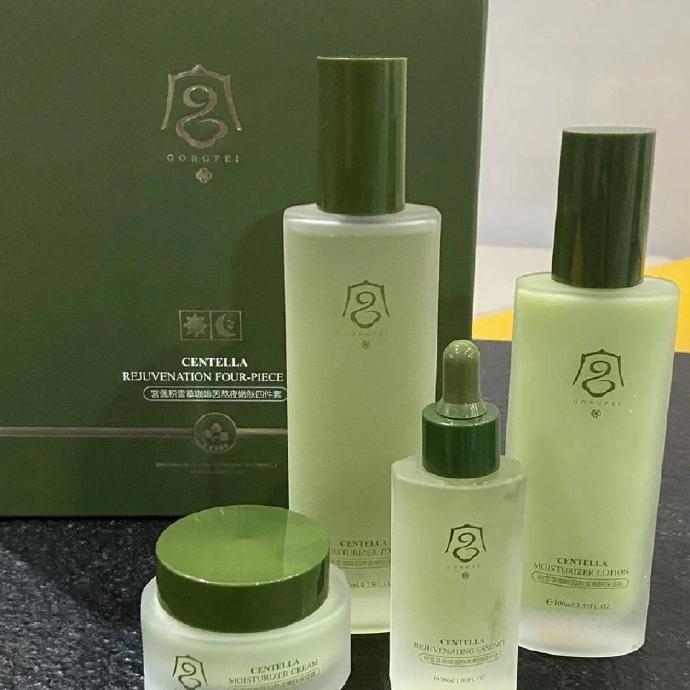
Skin inflammation caused by acne can lead to the formation of facial scars, which as a complication of acne can have a serious impact on the patient's quality of life [19]. Centella asiatica has the effect of promoting wound healing and can be used in the treatment of scars during the acne process. Chi-Wen Kuo et al. [20] developed a new anti-acne patch of Centella asiatica/Phellodendron amurense extract using a mixture of gelatin and chitosan as a matrix. The results of the antibacterial test and cytotoxicity test showed that the two-layer anti-acne patch containing 1 mg/mL Phellodendron extract and 2.4 mg/mL Centella asiatica extract can inhibit the growth of Propionibacterium acnes, and Centella asiatica extract can promote the synthesis of collagen by human fibroblasts, promote wound healing, and reduce the formation of scars during acne treatment.
1.2 Soothing effect
Sensitive skin (SS) is a hyper-reactive state of the skin, often manifested as subjective symptoms such as stinging, burning, and itching after the skin is stimulated by external factors. The skin may appear normal or show erythema and telangiectasia [21]. Due to ultraviolet radiation, stress, and air pollution, the number of people with sensitive skin is on the rise. Globally, as many as 71% of adults consider their skin to be sensitive to some degree, while 40% report moderate or very sensitive skin [22]. Sensitive skin is easily irritated by various factors, and the selection of ingredients with soothing effects can effectively relieve the symptoms of sensitive skin.
Centella asiatica extract and its active ingredients have anti-inflammatory, antioxidant and collagen synthesis-promoting effects, and are increasingly popular with sensitive skin consumers at home and abroad. Marta S. Ferreira et al. [23] collected 88 products for sensitive skin sold in pharmacies in Portugal and analyzed the active ingredients commonly used in these products. The results showed that Centella asiatica extract and its active ingredients accounted for 6.8% of these sensitive skin cosmetics, ranking sixth. Zhang Liguo et al. [24] used 0.1% Centella asiatica extract as a soothing active ingredient to prepare a soothing facial mask. A facial image analysis system was used to collect data by photographing the front, left and right sides of the faces of 15 subjects with sensitive skin. The results showed that using the product for one week can relieve redness in the face areas with sensitive skin.
According to the “Classification Rules and Catalog of Cosmetics”, soothing efficacy refers to the ability to help improve skin irritation and other conditions. Products that claim to have soothing efficacy must undergo efficacy evaluation, but at present, no effective methods for evaluating soothing efficacy products have been established in domestic or foreign research. The main efficacy ingredients that achieve soothing effects on sensitive skin include those that repair the skin barrier function, inhibit skin inflammatory responses, and calm excessive nerve responses. Commonly used evaluation methods in research include human experimentation and cell biology [25].
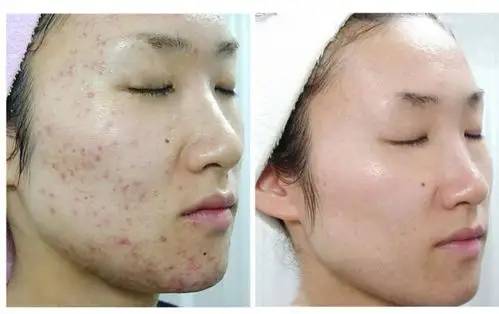
He Jianhua et al. [26] used sodium dodecyl sulfate as a modeling agent to establish a zebrafish irritation model to evaluate the soothing effect of asiaticoside. The results showed that in the 50 μmol/L asiaticoside administration group, the irritation intensity of zebrafish embryos decreased significantly compared with the model group, indicating a soothing effect and anti-inflammatory effect. Li Chuzhong et al. [27] combined Centella asiatica extract, peony root bark extract, honeysuckle extract and purslane extract. In vitro cell experiments showed that a 20% product formulation could inhibit the production of inflammatory factors (TNF-α, IL-1α, IL-6) in human keratinocytes induced by UVB. In human testing, after the subjects used the 2% product formula for 13 days, there was a significant improvement in the moisture content of the stratum corneum, transdermal water loss, erythema index, and melanin index. During the test, the subjects did not experience any adverse reactions, and the patch test and erythrocyte hemolysis test results were non-irritating, indicating that the natural plant formula containing Centella asiatica extract has a soothing effect, is gentle, has low irritation, and is suitable for use by people with sensitive skin.
1.3 Spot removal and whitening effect
Melanin is the main pigment in human skin and plays a vital role in preventing skin damage caused by ultraviolet radiation and the external environment [28]. However, excessive melanin production and accumulation in different parts of the skin can cause various skin diseases, such as freckles, age spots, chloasma, pigmentation and photoaging [29]. Tyrosinase is a key enzyme that catalyzes the synthesis of melanin, and inhibiting tyrosinase activity is the main way to regulate melanin formation [30]. In vitro enzyme model studies have shown that 4 μg/mL asiaticoside can inhibit mushroom tyrosinase activity by 44%, while the same concentration of hydroquinone inhibited mushroom tyrosinase activity by 49% [31]. Kwon et al. [32] found that Centella asiatica extract can inhibit the production of melanin in B16F10 cells in a concentration-dependent manner. Further studies found that asiaticoside can down-regulate the expression of tyrosinase mRNA and protein in B16F10 cells, thereby reducing melanin production.
Therefore, Centella asiatica extract and asiaticoside can inhibit tyrosinase activity and reduce melanin production. As ingredients of natural plant origin, they have the potential to be developed into freckle-removing whitening cosmetics. In the development of whitening ingredients that inhibit tyrosinase activity, mushroom tyrosinase is the most commonly used in vitro model because it is easy to purify and has a low production cost [33]. However, mushroom tyrosinase differs significantly from human tyrosinase in structure, amino acid sequence, and active site. Many active ingredients that inhibit melanin formation have been reported to have no inhibitory activity against mushroom tyrosinase [34]. Tina Liu et al. [35] found that Centella asiatica 95% ethanol extract had no inhibitory effect on mushroom tyrosinase, but had an inhibitory effect on human tyrosinase, with an inhibition rate of 67%. In summary, more research needs to be done on the whitening effect of Centella asiatica, including the extraction method, active ingredients, in vitro models and human testing.
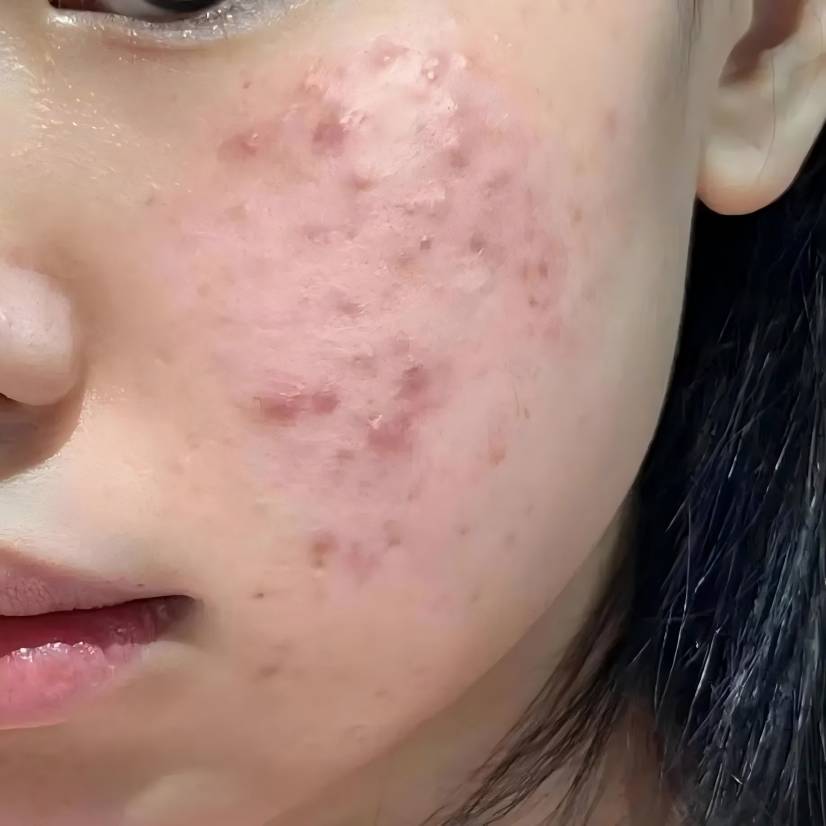
1.4 Anti-aging effect
As people age, the skin, as the body's largest organ, directly reflects the process of cellular aging. People try to maintain a youthful appearance and delay the appearance of signs of aging on the skin through diet and the use of functional cosmetics. However, skin aging is a highly complex process that is affected by many factors. The aging mechanism includes oxidative stress, DNA damage, gene mutation, inflammation, and telomere shortening [36]. Studies have shown that formula products containing Centella asiatica extract can induce a 9-fold increase in telomerase activity and which has the effect of delaying aging [37]. Visarut Buranasudja et al. [38] found that Centella asiatica callus 50% ethanol extract and Centella asiatica 50% ethanol extract can inhibit H2O2-induced oxidative damage to human skin fibroblasts, and has a protective effect on oxidative stress damage to human skin fibroblasts. RT-qPCR test results show that the regulatory mechanisms of the two extracts on related enzymes are different. Centella asiatica callus tissue extract can induce the expression of catalase, while Centella asiatica extract enhances the expression of superoxide dismutase 1 and superoxide dismutase 2.
The aging process of the skin includes endogenous aging and exogenous aging. Long-term exposure to ultraviolet radiation (UVR) is the main factor in the exogenous aging of the skin, so exogenous aging is mainly the process of photoaging [39, 40]. Photoaging causes the skin to lose elasticity, and the complexion becomes dull. Recent studies have found that centella asiatica can exert an anti-photoaging effect through different mechanisms. HONGHAO JIANG et al. [41] investigated the therapeutic effect of asiaticoside on skin photoaging and its mechanism of action. They found that asiaticoside can reduce the content of reactive oxygen species, enhance the activity of superoxide dismutase, and improve and restore the ultraviolet-induced changes in the appearance and cell structure of skin fibroblasts.
In addition, asiaticoside can inhibit β-galactosidase activity after UV irradiation, affect the TGF-β1/Smad signaling pathway, and reduce the UV-mediated upregulation of TGF-β1, Smad2 and Smad3, thereby exerting an anti-photoaging effect.
Matrix metalloproteinases (MMPs) are enzymes that degrade the extracellular matrix of skin cells and play an important role in inflammatory responses, cancer metastasis and skin aging [42]. During the photoaging process of the skin, UVB can reduce collagen synthesis and promote collagen dissolution by upregulating MMP expression, leading to changes in skin structure and the formation of wrinkles [43].

UV-induced MMP expression can be counteracted by inhibiting MMP activity or reducing MMP production, which can play a role in anti-photoaging. Previous studies have shown that Centella asiatica extract and asiaticoside can inhibit the expression of different MMP subtypes, reduce collagen breakdown, and thus delay skin aging (Table 2).
In summary, Centella asiatica can delay skin aging through different mechanisms and can be used in cosmetic formulations to delay skin aging.
02 Problems with transdermal absorption of Centella asiatica
The skin is composed of the epidermis, dermis and subcutaneous tissue. The epidermis is the outermost layer of the skin and is divided into five parts: the stratum corneum, the stratum lucidum, the stratum granulosum, the stratum spinosum and the stratum basale. The stratum corneum is located in the uppermost layer of the epidermis and is an important barrier function of the skin. However, the brick wall structure of the stratum corneum also poses a challenge for the penetration of active substances into the epidermis and dermis. Table 3 summarizes the molecular weights and lipophilicity of the four triterpenoid components of Centella asiatica. The four compounds have high molecular weights and are difficult to absorb through the stratum corneum.
Drugs with too strong a lipid solubility have difficulty distributing into the active epidermis after passing through the stratum corneum, while hydrophilic substances have difficulty passing through the stratum corneum. Inappropriate lipid-water partition coefficients further limit the transdermal absorption of the active ingredients of Centella asiatica. In addition, the poor solubility of asiatic acid and madecassic acid makes it difficult to form a concentration difference when applied to the skin. The formulation process of the product needs to consider improving the solubility of the compounds. In the daily use of cosmetics, the active ingredients work through local application and transdermal absorption. The low bioavailability of the active ingredients of Centella asiatica reduces the efficacy of the active ingredients.
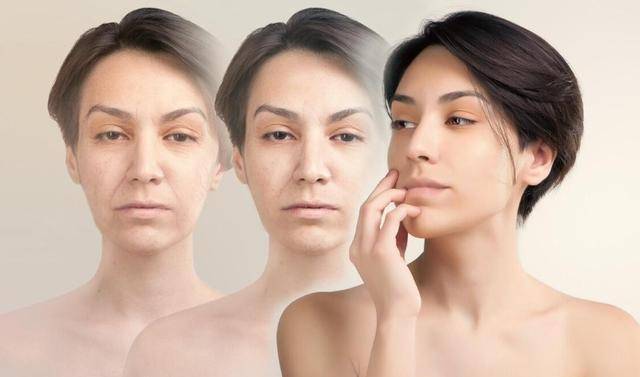
At present, researchers have used different technical means to promote the transdermal absorption of the active ingredients of Centella asiatica, including liposomes, nanocrystals, gels and vesicles (Table 4).
03 Summary and outlook
Centella asiatica is a common ingredient in cosmetics, and its active ingredients, such as centella asiatica extract, asiaticoside and asiatic acid, have the effects of clearing acne, soothing, freckle removal and whitening, and delaying aging. The cosmetics industry is developing rapidly, and consumer demand is becoming increasingly diverse. Centella asiatica has a variety of effects, is suitable for people with sensitive skin, and has a very broad application prospect.
However, the difficulty of the active ingredients of Centella asiatica in exerting their effects through the skin has limited their development and application in the cosmetics industry. This paper summarizes the methods for promoting the transdermal absorption of Centella asiatica extracts and their active ingredients, including liposomes, nanocrystals, gels and vesicles. At present, the transdermal absorption of Centella asiatica active ingredients is a hot research topic. The application of modern transdermal drug delivery technologies and methods will further enhance the activity of Centella asiatica in the body and expand its market in the cosmetics industry.
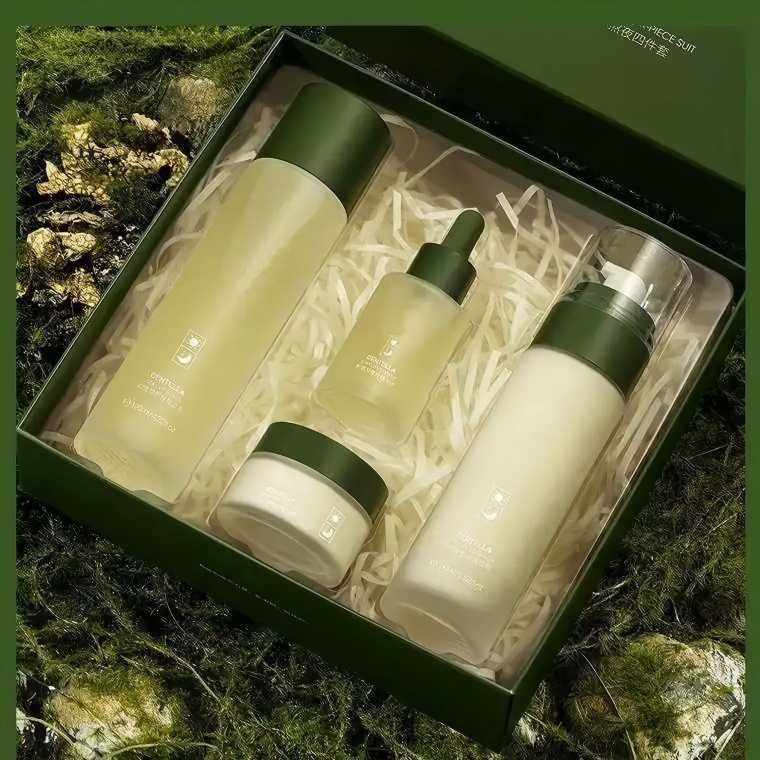
Reference
[1]CHO Y C, VUONG H L, HA J, et al. Inhibition of Inflammatory Responses by Centella asiatica via Suppression of IRAK1-TAK1 in Mouse Macrophages[J]. the American Journal of Chinese Medicine, 2020, 48(5): 1103-1120.
[2]GRAY N E, ALCAZAR M A, LAK P, et al. Centella asiatica: Phytochemistry and mechanisms of neuroprotection and cognitive enhancement[J]. Phytochemistry Reviews, 2018, 17(1): 161-194.
[3]BANDOPADHYAY S, MANDAL S, GHORAI M, et al. Therapeutic properties and pharmacological activities of asiaticoside and madecassoside: A review[J]. Journal of Cellular and Molecular Medicine, 2023, 27(5): 593-608.
[4]IDRIS F N, NADZIR M M. Comparative Studies on Different Extraction Methods of Centella asiatica and Extracts Bioactive Compounds Effects on Antimicrobial Activities[J]. Antibiotics, 2021, 10(4): 457.
[5]DINIZ L, CALADO L L, DUARTE A, et al. Centella asiatica and Its Metabolite Asiatic Acid: Wound Healing Effects and Therapeutic Potential[J]. metabolites, 2023, 13(2): 276.
[6]PARK K S. Pharmacological Effects of Centella asiatica on Skin Diseases: Evidence and Possible Mechanisms[J]. Evidence-Based Complementary and Alternative Medicine, 2021, 2021: 5462633.
[7]KUKULAO, KIRMIZIKAN S, TIRYAKI ES, et al. Asiatic acid exerts an anti- psoriatic effect in the imiquimod-induced psoriasis model in mice[J]. Immunopharmacology and Immunotoxicology, 2022, 44(3): 367-372.
[8]JOHNSON W, BERGFELD W F, BELSITO D V, et al. Safety Assessment of Centella asiatica-Derived Ingredients as Used in Cosmetics[J]. International Journal of Toxicology, 2023, 42: 5-22.
[9]TAN J, BHATE K. A global perspective on the epidemiology of acne[J]. British Journal of Dermatology, 2015, 172: 3-12.
[10]CENGIZ G F, GUREL G. Difficulties in emotion regulation and quality of life in patients with acne[J]. Quality of Life Research, 2020, 29(2): 431-438.
[11]DRÉNO B. What is new in the pathophysiology of acne, an overview[J]. Journal of the European Academy of Dermatology and Venereology, 2017, 31: 8-12.
[12] Fan Yukun, Hao Fei. The role and mechanism of Propionibacterium acnes in the pathogenesis of acne vulgaris [J]. Bulletin of Dermatology, 2022, 39(01): 10-17.
[13]SHEN X, GUO M, YU H, et al. Propionibacterium acnes related anti-inflammation and skin hydration activities of madecassoside, a pentacyclic triterpenesaponin from Centella asiatica[J]. Bioscience, Biotechnology, and Biochemistry, 2019, 83(3): 561-568.
[14]BYRDA L, BELKAID Y, SEGRE JA. The human skin microbiome[J]. Nature Reviews Microbiology, 2018, 16(3): 143-155.
[15]DRENO B, MARTIN R, MOYAL D, et al. Skin microbiome and acne vulgaris: Staphylococcus, a new actor in acne[J]. Experimental Dermatology, 2017, 26(9): 798-803.
[16]GANNESEN A V, LESOUHAITIER O, RACINE P, et al. Regulation of Monospecies and Mixed Biofilms Formation of Skin Staphylococcus aureus and Cutibacterium acnes by Human Natriuretic Peptides[J]. Frontiers in Microbiology, 2018, 9: 2912.
[17]TOTTE J, van der FELTZ W T, BODE L, et al. A systematic review and meta-analysis on Staphylococcus aureus carriage in psoriasis, acne and rosacea[J]. European Journal of Clinical Microbiology & Infectious Diseases, 2016, 35(7): 1069-1077.
[18]WANG L, LI D, SHEN Y, et al. Preparation of Centella asiatica loaded gelatin/chitosan/nonwoven fabric composite hydrogel wound dressing with antibacterial property[J]. International Journal of Biological Macromolecules, 2021, 192: 350-359.
[19]CHILICKA K, RUSZTOWICZ M, SZYGULA R, et al. Methods for the Improvement of Acne Scars Used in Dermatology and Cosmetology: A Review[J]. Journal of Clinical Medicine, 2022, 11(10): 2744.
[20]KUO C, CHIU Y, WU M, et al. Gelatin/Chitosan Bilayer Patches Loaded with Cortex Phellodendron amurense/Centella asiatica Extracts for Anti-Acne Application[J]. Polymers, 2021, 13(4): 579.
[21] Li An, Yang Yuanyuan. Research progress in the diagnosis and classification of sensitive skin [J]. China Cosmetics, 2022, (Z3): 114-118.
[22]CHEN W, DAI R, LI L. The prevalence of self-declared sensitive skin: a systematic review and meta-analysis[J]. Journal of the European Academy of Dermatology and Venereology, 2020, 34(8): 1779-1788.
[23]FERREIRA M S, LOBO J, ALMEIDA I F. Sensitive skin: Active ingredients on the spotlight[J]. International Journal of Cosmetic Science, 2022, 44(1): 56-73.
[24] Zhang Liguo, Guo Jixiang, Xu Hujun. Preparation and performance research of a soothing facial mask [J]. Guangzhou Chemical Industry, 2022, 50(24): 89-92.
[25] Tan Qidan, Bi Yongxian, Liu Lei, et al. Research status of the evaluation of the soothing effect of cosmetics [J]. Daily Chemical Industry (Chinese and English), 2023, 53(02): 193-201.
[26] He Jianhua, Guo Qingquan, Wang Yaxin, et al. Application of zebrafish embryo behavior in the evaluation of the soothing effect of cosmetic ingredients [J]. Journal of Light Industry, 2022, 37(03): 117-126.
[27] Li, C. Z., Chen, Q. S., and Gong, S. Z. The soothing and repairing efficacy of a natural plant formula. Perfume, Essence and Cosmetics, 2022, (05): 30-35.
[28]SLOMINSKI R M, SARNA T, PLONKA P M, et al. Melanoma,Melanin, and Melanogenesis: The Yin and Yang Relationship[J]. Frontiers in Oncology, 2022, 12: 842496.
[29]PILLAIYAR T, MANICKAM M, JUNG S H. Recent development of signaling pathways inhibitors of melanogenesis[J]. Cellular Signalling, 2017, 40: 99-115.
[30]PILLAIYAR T, MANICKAM M, NAMASIVAYAM V. Skin whitening agents: medicinal chemistry perspective of tyrosinase inhibitors[J]. Journal of Enzyme Inhibition and Medicinal Chemistry, 2017, 32(1): 403-425.
[31] Liu Dong, Zhu Wenyuan. Inhibitory effect of asiaticoside on tyrosinase activity and its effect on melanin synthesis in Cloudman S91 melanoma cells [J]. Chinese Journal of Integrated Traditional and Western Dermatology and Venereology, 2004, 3(01): 7-10.
[32]KWON K J, BAE S, KIM K, et al. Asiaticoside, a component of Centella asiatica, inhibits melanogenesis in B16F10 mouse melanoma[J]. Molecular Medicine Reports, 2014, 10(1): 503-507.
[33] Ren Qianqian, Wu Hua, Jin Jianming. Cosmetic plant raw materials (II)—Research and development of plant whitening raw materials that inhibit tyrosinase activity [J]. Daily Chemical Industry, 2021, 51(03): 178-185.
[34]LI J, FENG L, LIU L, et al. Recent advances in the design and discovery of synthetic tyrosinase inhibitors[J]. European Journal of Medicinal Chemistry, 2021, 224: 113744.
[35]LIU T, LU Y, TONISSEN K, et al. Application of traditional Chinese medicine as skin depigmentation agents[J]. Heliyon, 2022, 8(12): 12571.
[36]ZHANG S, DUAN E. Fighting against Skin Aging: The Way from Bench to Bedside[J]. Cell Transplantation, 2018, 27(5): 729-738.
[37]TSOUKALAS D, FRAGKIADAKI P, DOCEA A O, et al. Discovery of potent telomerase activators: Unfolding new therapeutic and anti-aging perspectives[J]. Molecular Medicine Reports, 2019, 20(4): 3701-3708.
[38]BURANASUDJA V, RANI D, MALLA A, et al. Insights into antioxidant activities and anti-skin-aging potential of callus extract from Centella asiatica (L.)[J]. Scientific Reports, 2021, 11(1): 13459.
[39]TOBIN D J. Introduction to skin aging[J]. Journal of Tissue Viability, 2017, 26(1): 37-46.
[40]CAVINATO M, JANSEN-DURR P. Molecular mechanisms of UVB- induced senescence of dermal fibroblasts and its relevance for photoaging of the human skin[J]. Experimental Gerontology, 2017,
94: 78-82.
[41]JIANG H, ZHOU X, CHEN L. Asiaticoside delays senescence and attenuate generation of ROS in UV-exposure cells through regulates TGF-β1/Smad pathway[J]. Experimental and Therapeutic Medicine, 2022, 24(5): 667.
[42]OHS, ZHENG S, FANG M, et al. Anti-Photoaging Effect of Phaseolus angularis L. Extract on UVB-Exposed HaCaT Keratinocytes and Possibilities as Cosmetic Materials[J]. molecules, 2023, 28(3): 1407.[43]TANAKA Y, UCHI H, FURUE M. Antioxidant cinnamaldehyde attenuates UVB-induced photoaging[J]. Journal of Dermatological Science, 2019, 96(3): 151-158.
[44]NEMA N K, MAITY N, SARKAR B K, et al. Matrix metalloproteinase, hyaluronidase and elastase inhibitory potential of standardized extract of Centella asiatica[J]. Pharmaceutical Biology, 2013, 51(9): 1182-1187.
[45]KWON M C, CHOI W Y, SEO Y C, et al. Enhancement of the skin-protective activities of Centella asiatica L. Urban by a Nano- encapsulation process[J]. Journal of Biotechnology, 2012, 157(1): 100-106.
[46]KIM E, PARK J S, KIM M S, et al. High-Payload Nanosuspension of Centella asiatica Extract for Improved Skin Delivery with No Irritation[J]. International Journal of Nanomedicine, 2021, 16: 7417- 7432.
[47]DA ROCHA P, SOUZA B D, ANDRADE L M, et al. Enhanced asiaticoside skin permeation by Centella asiatica-loaded lipid nanoparticles: Effects of extract type and study of stratum corneum lipid dynamics[J]. Journal of Drug Delivery Science and Technology, 2019, 50: 305-312.
[48] Chen Yufei, Gao Zongying, Zhang Xuchu, et al. Preparation of hydroxycentella asiatica glycoside liposomes and in vitro transdermal research [J]. Contemporary Chemical Research, 2021, (19): 19-21.
[49]OPATHA S, TITAPIWATANAKUN V, BOONPISUTIINANT K, et al. Preparation, Characterization and Permeation Study of Topical Gel Loaded with Transfersomes Containing Asiatic Acid[J]. molecules, 2022, 27(15): 4865.
[50]LI M, WANG Q, CHEN N, et al. Probing Pharmaceutical Strategies to Promote the Skin Delivery of Asiatic Acid from Hydrogels: Enhancement Effects of Organic Amine Counterions, Chemical Enhancers, and Microneedle Pretreatment[J]. pharmaceutics, 2022, 14(11): 2532.
[51]PAOLINO D, COSCO D, CILURZO F, et al. Improved in vitro and in vivo collagen biosynthesis by asiaticoside-loaded ultradeformable vesicles[J]. Journal of Controlled Release, 2012, 162(1): 143-151.


 English
English French
French Spanish
Spanish Russian
Russian Korean
Korean Japanese
Japanese